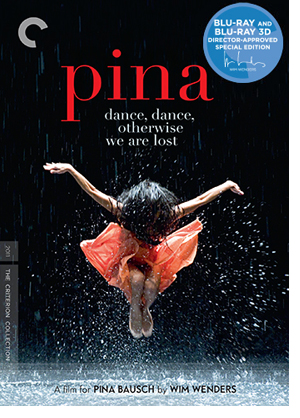 Film: Pina: A film for Pina Bausch
Film: Pina: A film for Pina Bausch
Director: Wim Wenders
?Dance, dance, otherwise we are lost.?
Pina Bausch
A Physical Poem Whittled From the Core of Human Experience
Ernest Sprott, my favourite English professor, once said, ?If you can’t put your thought into words, then perhaps It’s not a thought.?
I believe he said this to encourage us to be both disciplined thinkers and effective writers, and as such it was good advice (considering why we were there in that classroom). But after having seen Pina I would add this: And if you can’t interpret your feeling with a physical movement, then perhaps It’s not a feeling.
German choreographer Pina Bausch designed dances that recreated states of emotional emergency, those conditions of such overwhelming loss and helplessness that the world begins to look odd to us, almost comical in its absurdity.
Her choreography often expresses the frenzy of human need. At other times it depicts a reflective postmodern introspection as a reaction to industrial ugliness and human alienation. You’ll see a number of dances in incongruous spaces, performances that manifest an intense engagement with the real world (whether the real world wants it or not).
You don’t know whether to embrace this woman or to reproach her for having introduced this new way of dancing that spawned so many pale imitators, copycats who annoy even more with the ?artspeak? they employ to explain their meaningless gyrations.
The Tanztheater Wuppertal, however?the modern dance company Bausch ran for more than 20 years?gives us the real McCoy: authentic emotion expressed with clarity, poise, and grace. Their achievement is phenomenal. As far as I can see it was accomplished with single-minded dedication, a bottomless well of creativity, an aesthetic representing the pinnacle of what was possible, and a devotion to bare-bones art.
Pina was a minimalist and not just with sets, makeup,and costumes?she was woman of few, but persuasive words. One dancer remarks that it was Pina who gave her a language, a vocabulary in which to express herself. Pina once said to her, after months of rehearsals, ?You’ll just have to get crazier.?
Christopher Morley said that the poet is one who leaves the door to madness ajar. You see the door being left ajar in many of these dance sequences, but the appearance of madness belies the formidable achievement of simultaneously maintaining quality control. A singular mission, to say the least, and one only the bravest of artists will tackle.
Pina would get her dancers to act as her creative muses, asking, for example, that they act out an image, an object, a thought, or a feeling. She would then choreograph a distilled essence of their best performances, in very much the way improvisational actors will start with a premise and then brainstorm a sketch.
For Pina, who exhorted dancers to express their authentic selves in the extreme (?Go on searching!? was one of her cryptic reminders), these dancers? spontaneous expressions were the raw material of Pina’s choreography. They shared a deeply symbiotic relationship in which it was hard to say where Pina left off and the dancers began.
A lovely girl in a white dress is sitting on a grass island at a busy intersection. You can see the golden arches of McDonalds advertised on a nearby building. A steel grid overpass dissects the sky above her. She turns on a small ghetto blaster from which we hear a crooner singing a romantic song. A young man in a suit approaches, and they exchange a series of throbbing glances and sweeping, passionate gestures. When they look around at the city they seem lost and confused, but when they look back at each other again they appear sure and confident. Then he runs off. She sits back down on the grass, listening to the music and staring in his direction.
Freeze any frame and you have a masterpiece. Pina is one of those instances when the subject matter eclipses the work of the film director, and so it doesn’t immediately occur to the viewer to acknowledge that without Wenders? brilliant and carefully executed depiction of the genius of his dear friend, we couldn’t appreciate her gift to the world nearly so well.
Pina Bausch died while the film was being made, and Wenders halted production, but the Tanztheater company pushed him to finish it. I’m so glad they did. I defy anyone who watches this film to come out of it not loving Pina Bausch and all that she stood for.
Pina manifests seven of the Mindful Bard’s criteria for films well worth seeing: 1) it is authentic, original, and delightful; 2) it provides respite from a sick and cruel world, a respite enabling me to renew myself for a return to mindful artistic endeavour; 3) it is about attainment of the true self; 4) it inspires an awareness of the sanctity of creation; 5) it displays an engagement with and compassionate response to suffering; 6) it makes me want to be a better artist; and 7) it makes me appreciate that life is a complex and rare phenomenon, making living a unique opportunity.
Wanda also penned the poems for the artist book They Tell My Tale to Children Now to Help Them to be Good, a collection of meditations on fairy tales, illustrated by artist Susan Malmstrom.

